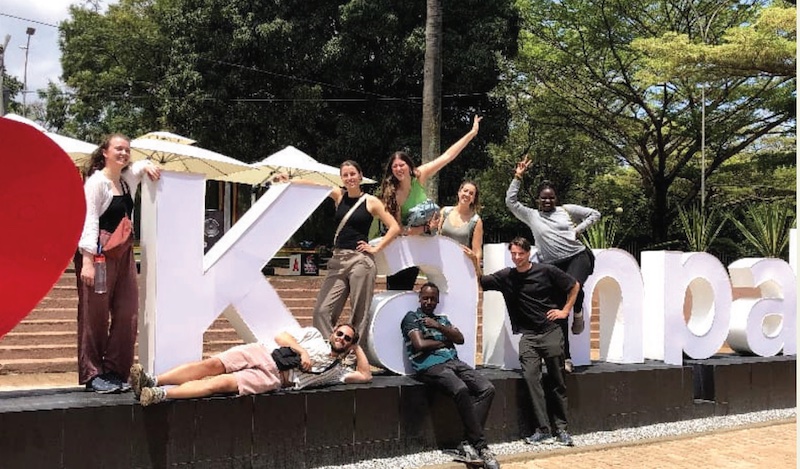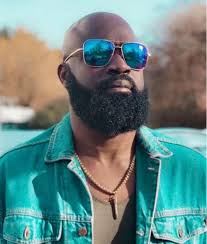
Screenshot
Although boda bodas are commonly known in Uganda as a means of convenient transport, for Andrew Mutawe, a tour guide with Keefa Motor Tours, boda boda is the trusty steed that has enabled tourists to have a scenic experience of Kampala.
This was evident at the recent expeditionary trip that a group of Dutch tourists had around Kampala, exploring the different sites, from the Baha’i temple, the Independence monument, Gaddafi mosque, the bustling downtown streets, markets, to uptown places like Kololo and Nakasero.
Keefa Motor Tours was formed in 2012 to accord tourists the opportunity to tour Kampala on motorbikes. Before the trip around Kampala city on a Friday in October, Mutawe ensured that a fleet of eight serviced bikes was stationed at Bushpig Backpackers hostel in Kololo, where the tourists were staying.
“I take effort to brief the tourists on what to expect on the tour, from teaching them how to get on and off the motorcycles, and encouraging them to carry backpacks when in downtown Kampala and in the busy markets,” Mutawe said.
Notably, the tourists are allowed to choose whom they want to ride with, and are given helmets to use for the whole day.
BAHA’I, KOLOLO & INDEPENDENCE MONUMENT
As the orientation process ended, we hopped onto boda bodas to commence the trip around Kampala. For most Ugandans, it is normal to use a boda, but for the Dutch tourists, it was a once-in-a-lifetime experience, with some beaming with happiness and others clutching the bikes for dear life.
At the temple, we were welcomed by a temple guide Evas, who gave a quick history about the Baha’i faith, religious practices, and a deep dive into the temple’s architecture, which makes it a unique site to behold.

“When the Bahá’í Faith was first introduced to Uganda in 1951, it was brought by Musa Banani and his wife Samiyyeh Banani from Iran, together with a British man named Philip Hainsworth. Upon their arrival, Musa Banani bought a house in Kampala, where he began sharing and teaching the Bahá’í message. In April 1952, Uganda established its first local administrative body, known as the Local Spiritual Assembly. The nine members included notable Ugandans such as Crispin Kajubi, Fred Biggawa, Peter Musoke and Enoch Olinga, alongside the Bananis and Hainsworth,” Evas said.
“Construction of the temple began in 1958 and was completed in 1961, giving rise to Africa’s continental temple located in Kikaaya, a serene suburb of Kampala.”
We took a walk around the temple, with the tourists appreciating the unique architecture and green grounds; some of the tourists took keen interest in some of the fruits including jackfruit, which they were seeing for the first time on their trees.
We moved on to Kololo, the upscale residential neighbourhood of Kampala, which is home to many embassies. The tourists seemed to love the less chaotic ride through Kololo we stopped at Kololo airstrip, with Mutawe explaining the history behind the National Ceremonial grounds as a place that was a prison of Chief Awich of Payira, imprisoned by the British during the pre-colonial era for leading the Lamogi rebellion and lamenting in his solitary confinement: “An atye kany kololo,” which means “I am here alone” in the Luo language.
His captors not understanding the language, later called the place Kololo. Additionally, Mutawe shared that Kololo National Ceremonial grounds was the place where the Union Jack was lowered when Uganda got its independence on the October 9, 1962, and it is where Independence and independence monument located along Speke road, Nakasero.
The monument built by Gregory Maloba, was recently enhanced by gigantic letters spelling ‘I Love Kampala’.
NAKASERO MARKET AND DOWN-TOWN KAMPALA
From leafy Nakasero, we headed downtown to the popular Nakasero market, and I got to see the seedy side of Kampala through the foreigners’ eyes.
Some of the tourists were drawn to the different foodstuffs that were being sold in the market, and in an ever-adventurous fashion, they embarked on trying out different snacks that are popular amongst most Ugandans, ranging from grasshoppers to white ants, sim sim seeds, banana chips, pineapples and apple bananas, which they ate to replenish their strength.

Notably, as we moved out of the market, most of the tourists recognized the busy nature of the city, and they clung to their bags like a bird protecting her eggs, and I heard some talk about the relative cleanliness that Kampala offered.
As the day progressed, we moved towards the old taxi park with tourists taking out their phones, taking pictures of the busy park from a bird’s eye view, and appreciating the busy day-to-day nature that Kampala has to offer – nothing like the trams and trains they are used to back in the Netherlands.
LUNCH, GADDAFI MOSQUE AND BANANGE BEER
We recharged our batteries with a heavy lunch at Rahim Foods, to muscle up the energy needed to visit the last sites of the day – Gaddafi mosque and Banange beer. The beauty of this package is that it takes tourists to places they would possibly not venture into on their own, despite being in the city centre.
For example, the lunch at Rahim Foods near Namayiba bus terminal in Old Kampala, was sumptuous and full of the unique African delicacies that make Ugandan food special; they tasted pilau, matooke, beans, fried chicken, chapati and groundnut paste.

It was a finger-licking experience for the tourists as they ate from one big lusaniya (platter) and endeavored to experiment with the new dishes. With lunch done, we moved a few metres away to the Gaddafi mosque.
The four female tourists had to wear the hijab as they entered the mosque premises and the male tourists wore tunics. We were taken around the mosque by Fatuma Nalujja who shared the brief history of the largest mosque in East Africa, with its initial construction plans dating back in 1972 during the rule of Idi Amin.
Construction halted in 1976 due to political instability and financial difficulties. “In 2001, during a visit to Uganda, former Libyan leader Colonel Muammar Gaddafi was approached by the Mufti to complete the mosque and he agreed to fund the mosque as a gift to Uganda’s Muslims. Construction resumed in 2006 and was completed in 2007, when Gaddafi commissioned the mosque that was named in his honor,” Nalujja said.
The Old Kampala mosque grounds are also home to a reputable hospital, and neighbour to Fort Lugard, another tourist attraction in the area. The tourists paid critical attention to the mosque’s beauty and they got an opportunity to see how the Qur’an is read and how the chants are made.
Nalujja told the group that the mosque blends African, European and Islamic architecture, seating 15,000 worshipers. Having appreciated the mosque’s inner architectural beauty, we took the winding stairs to the minaret which stands at 166ft.
From that height, one has a bird’s eye view of most of Kampala. As the day ended and we headed back to the quieter Nakasero suburb away from the downtown chaos, we sought out Banange Breweries along Kyadondo road.
Banange beer is a hit with tourists and Kampala’s expatriate community, and the group got an opportunity to understand how the beer is brewed and to taste of the famous Banange Lite Ale, loved for its light, easy drinking blonde ale, Belgian Witbier, Amber ale and Banange IPA – a boldly hopped India pale ale with medium bitterness.
TOURIST EXPERIENCES
Lynn defined her experience as one filled with emotions.
“It was a moment of happiness but I also felt a bit scared. I almost peed my pants laughing, but it was all kinds of emotions in one motorcycle day. I think I was most impressed by the mosque. Because it is very far from what I stand for. So, it was nice to visit it. I had never entered something Islamic. I think that was the thing for me that was the most special. So, I really enjoyed it, and also eating with my fingers,” Lynn said.

Rebecca told The Observer that her favourite experience was exploring the city on boda boda and it was nice exploring the temple, Nakasero market and having a bird’s eye view from the Gaddafi mosque minaret.
“I think it’s a really nice way to explore the city. Like, walking around would take too much time, a car would get stuck in traffic. But I was pretty relaxed on the motorcycle, and I think at some point, I was like, oh, are we going to touch some other motorcycles?” Rebecca shared.
For Emily, she really enjoyed exploring on a motorcycle and it made her feel free and adventurous.
“You can see a lot of the city in one day. You see many places. You’re really quick. I really liked going downtown to the market as well. I think that gives a nice overview of what the city really looks like. Yeah, I would definitely do it again. I felt safe with my female boda rider. She was a badass!” Emily noted
Hank Jan told The Observer that his best experience of the day was the Gaddafi mosque and viewing the city from the minaret. Ellen enjoyed the tour though she found it scary; still, she was glad she took the tour.
Luuk ranked the experience at one hundred percent, from beginning to end. He appreciated Gaddafi mosque and the Banange brewery the most. This boda boda tour is a stark departure from what a normal safari in Uganda would entail – gorilla tracking and national park drives in the wild; this is real life as lived by Ugandans.
ebenezernsubuga405@gmail.com



